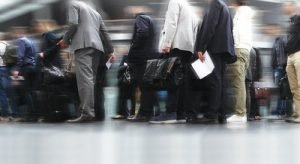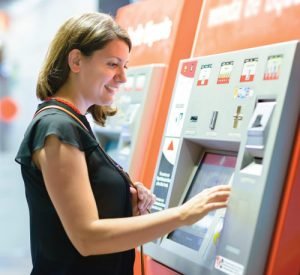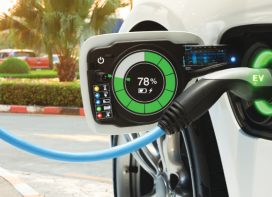 As ticketing becomes ever more complex, offering an ever-greater range of products and services, many would argue that this complexity has filtered through to the simple act of choosing and paying for their travel. Krister Dackland from Storstockholms Lokaltrafik (SL) tells us about the creation of SL’s new ticketing system, one that aims to put ease of use at its core.
As ticketing becomes ever more complex, offering an ever-greater range of products and services, many would argue that this complexity has filtered through to the simple act of choosing and paying for their travel. Krister Dackland from Storstockholms Lokaltrafik (SL) tells us about the creation of SL’s new ticketing system, one that aims to put ease of use at its core.
When it comes to digitalisation, we have three key focus areas: traffic information, data analysis and ticketing. Naturally, these three are all linked. You need to have all of them to develop the features that your customers require.
When it comes to ticketing, our aim is to build a system that is easy to understand, easy to use and which provides the customers with multiple ways to buy tickets. There will be a contactless and close loop Storstockholms Lokaltrafik card based on the same standards as the Aston Norma, the bank cards. Then, of course, there will be optical tickets such as QR codes, and since we are EMV standard, our customers can buy using their wallets, or their watch, and so on. There will be different ways to carry tickets as well as different ways to buy tickets.
 We are striving to make it as easy as possible to buy tickets and equally easy to validate that ticket. In our new system, we have only one validator – one single reader.
We are striving to make it as easy as possible to buy tickets and equally easy to validate that ticket. In our new system, we have only one validator – one single reader.
Using EMV standard will bring the advantage of lower implementation costs. Equally, we will only need to buy one validator, not two or three. And naturally, maintenance costs will also be lower. Most important, however, is ease of use, and creating a system that is very much user friendly for the passengers.
The implementation of the new systems is being done in an incremental way. Naturally, the system will evolve over the next two years, gaining features over time. Built on the latest technology, cloud technologies will allow us to adapt it according to the needs of the customers. It’s about building on newer technologies and providing services in a medium that is familiar to the customers.
Phasing out the old and introducing the new
 The aim is to start a graceful close down of the old system in 2022. Nonetheless, we will constantly study customer uptake of the services run on the new system. We are investing a lot in our apps, enabling them to act as a travel body. Passengers will be able to buy their tickets, manage their tickets, plan their trips and so on, all from their smartphone.
The aim is to start a graceful close down of the old system in 2022. Nonetheless, we will constantly study customer uptake of the services run on the new system. We are investing a lot in our apps, enabling them to act as a travel body. Passengers will be able to buy their tickets, manage their tickets, plan their trips and so on, all from their smartphone.
When it comes to ticketing, the aim is to build a system that is easy to understand, easy to use and which provides customers with multiple ways to buy tickets. As the new system is being implemented, the back-end systems are also being built up. Analysis of data, when and where passengers use their cards, is of great benefit and can be utilised to optimise the product portfolio and apply it in future planning of transport infrastructure.
Notably, a solution that is flexible is being introduced. In theory, we could even sell other tickets as well, or provide combination tickets. There can also be products that are only live at the weekend. We could look at combining aspects – a football game in Stockholm with travel to and from the stadium, or perhaps with a museum within our portfolio. There are so many possibilities.
Right now, however, the focus is on trying out the system; seeing that it really works before more complicated products are added. While building the ability, we have also allowed other commercial players to resell our tickets. One is a bus company, and one a collaboration between the regions in the middle of Sweden. This is an enabler for Mobility-as-a-Service.
Integrating MaaS into ticketing
When it comes to Mobility-as-a- Service, it’s not about the technology, it’s about the business model. How do we earn money in a business that is, for instance, famous for taxis? MaaS poses the problem of how to split the revenue between the different parties and whether it’s truly worthwhile for public transport companies or private companies. Here we need to make it as easy as possible to buy tickets and equally easy to validate that ticket.
Solving our mobility problems
It is important to solve our mobility problems somehow, because city populations are still continuing to grow. You cannot have a car. It’s not about pollution – it’s about congestion. We need to find smarter, more efficient ways to move people. Perhaps there’s even an argument for finding ways to lessen people’s need to travel, particularly around peak times. Commuters for instance, could use digital technologies to work from home, or even work from an office closer to their home. However, there will always be times when you need to meet people, when you need to travel – and this is where we need to find the answers. It is encouraging to see some progress is being made. In Stockholm, there are people who have purposely given up the private car, use public transport instead and simply hire a car when they can’t travel by any other mode. Cities everywhere are facing very similar changes with their own kind of intricacies and subtleties. Every major city faces these challenges, and each of us has to go about solving them in our own way.
Dr. Krister Dackland is CIO at Stockholm Public
Transport (SL). Before entering the position at SL,
Krister was CIO at TDC Nordic. He holds patents in
the mobile messaging area.
 TrafficInfraTech Magazine Linking People Places & Progress
TrafficInfraTech Magazine Linking People Places & Progress


